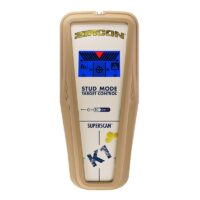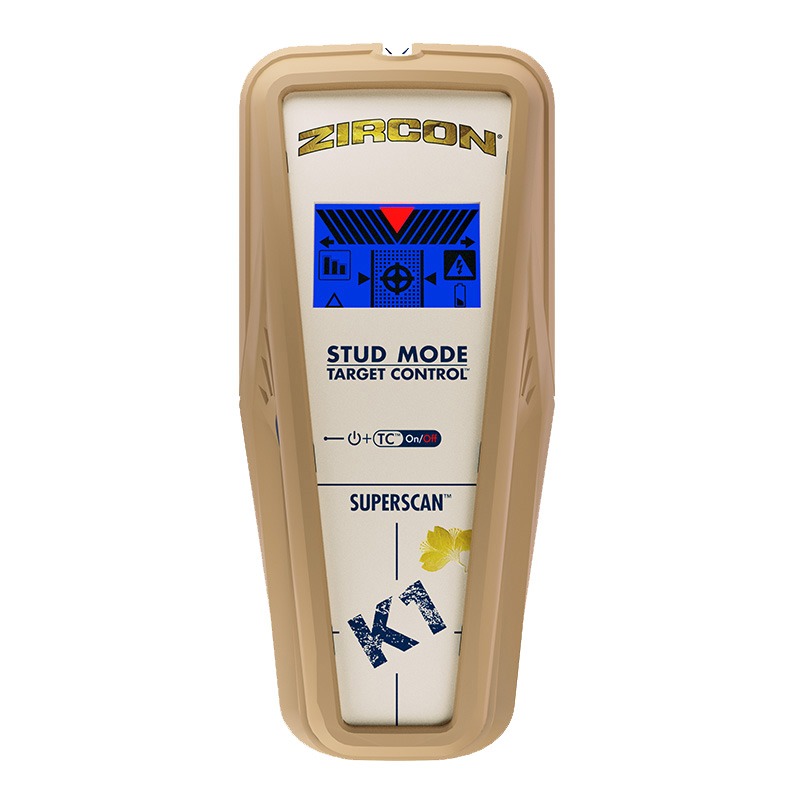The latest stud finder design virtually eliminates false positives with multiple sensors and high-tech signal processing Plumbers are responsible for many tasks such as installing, repairing, and maintaining pipes, valves, fixtures, fittings, and drainage systems. To work safely and productively, plumbing contractors need as accurate a picture as possible of everything in the wall. Expediting Read more
stud finder

The latest stud finder design virtually eliminates false positives with multiple sensors and high-tech signal processing
Plumbers are responsible for many tasks such as installing, repairing, and maintaining pipes, valves, fixtures, fittings, and drainage systems. To work safely and productively, plumbing contractors need as accurate a picture as possible of everything in the wall. Expediting plumbing work while minimizing costly mistakes, the stud finder is deemed an essential tool.
Plumbing contractors have long utilized stud finders with a design based on unrefined capacitive technology. While this technology can indicate the location of wood stud framing, it also discovers metal, plastic, wiring, and other objects in walls just as easily. Furthermore, constantly active, hypersensitive “deep scanning” models further increase the potential for “false positives” – objects mistakenly identified as studs. The result is that traditional stud finders frequently chirp or flash LED lights to indicate something was sensed, but it is not clear what that is.
Today, the challenge of quickly and accurately assessing what is within walls is only increasing. There is more behind the drywall than ever, including network cabling, plastic pipes, and tubing. Complicating matters, not all construction follows standard stud spacing practices of 16 inches or 24 inches on-center, and there are often additional support beams, fire blocks, and other framing features that can further muddy the picture.
In addition, piping may change directions to avoid studs, wiring, and other obstructions. Plumbing location also varies depending on the home’s style and layout.
Now, newer, and more refined technology is being introduced to the popular stud finder category, and it promises to redefine the standards for stud finder performance. The next generation “intelligent” models incorporate multiple sensors and sophisticated signal processing technology to alert the presence of false positives. Using a sophisticated, selectable deeper scan mode, the technology can also be used to quickly identify metal pipes and even plastic pipes or PEX tubing behind the walls when this is desired.
For professional plumbing contractors, this innovative technology will provide a more accurate representation of what is behind the drywall.

Increasing Plumbers’ Productivity and Profitability
For plumbers, maximizing their work efficiency and profitability involves knowing as clearly as possible what is inside a wall before cutting into it. They do not want to create damage. They want to reduce the risk of costly mistakes that need to be repaired.
To work safely and productively, plumbers typically rely on stud finders to accurately find the studs within a wall. This can be important to support long pipe runs and heavy fixtures. Plumbers also need to avoid wood studs, since most of the work involves remodeling rather than new construction.
Finding the voids between studs is necessary to quickly assess how much room there is within the wall space to reroute pipe or mount a new fixture. When remodeling a kitchen or bathroom, it can be particularly important to understand if the studs are plumb, or whether fire blocking runs horizontally.
To better address these needs, plumbers now can use advanced, second-generation stud finders like a new unit by Zircon Corporation that utilizes multiple sensors and sophisticated signal processing to filter out false positives.
Zircon, a wholly owned subsidiary of ZRCN Inc., has been in the stud finder game for more than 40 years. In 1980, the company manufactured the original StudSensor™ stud finder and invented the category. The Silicon Valley-based company produces more than just stud finders. They design and manufacture an extended range of sensor technologies in electronic hand tools including wall scanners, metal detectors, circuit breaker finders, drill guides, water detectors, and leveling tools.
The company’s latest innovation is the Wood Stud SuperScan® advanced stud finder with Target Control® Technology and FILTERz™ cancellation. By analyzing the complex data streams from multiple sensors and controlling the result using sophisticated intelligence, the stud finder can find wood studs and filter out metallic objects such as plumbing, conduit, straps, brackets, screws, protector plates, or ductwork in the wall.
DeepScan® mode locates the center of wood studs and metal up to 1½ inches (38 mm) deep within walls. A MetalliWarning® indicator will display when metal is detected.
Additionally, the technology can alert the user to the presence of other low density, non-metallic targets, like plastic pipe and PEX tubing. To prevent cutting into dangerous electrical wires, the device also provides WireWarning® Detection, which indicates the presence of live, unshielded AC electricity.
The stud finder has a new and improved user interface that provides an intuitive “go/no go” indication in response to what is being sensed. A new haptic vibration and a patented SpotLite® Pointer that shines an arrow-shaped beam on the wall.
For plumbers, the ability to quickly identify what is inside the wall before cutting into it will substantially increase their productivity and safety.
Given the opportunity to see a much clearer picture of what is in the wall, plumbers would do well to upgrade their existing stud finder with an affordable, next-generation model that is sure to become the new standard in scanning.
For more information, call Zircon Corporation at (408) 963-4550, e-mail: info@zircon.com, or visit www.zircon.com
